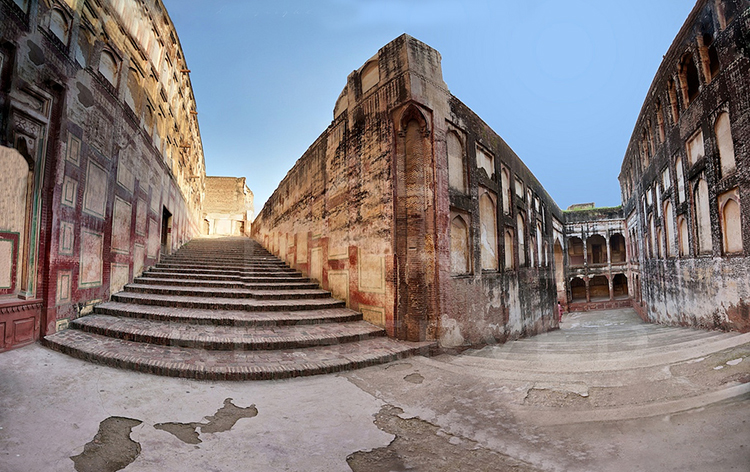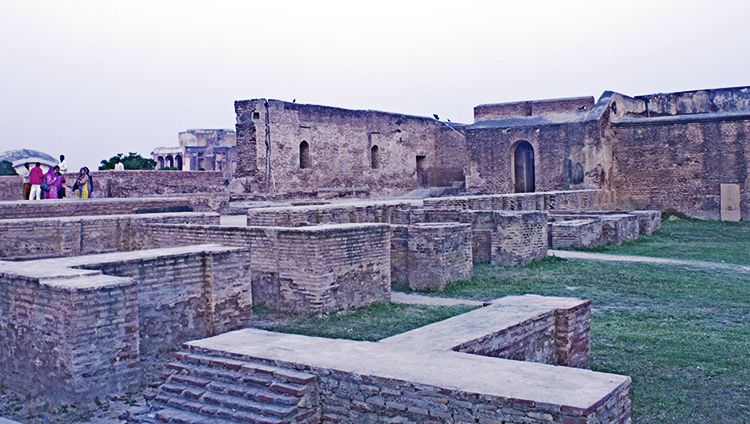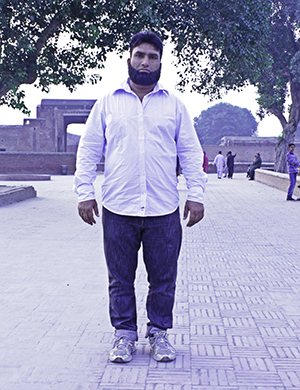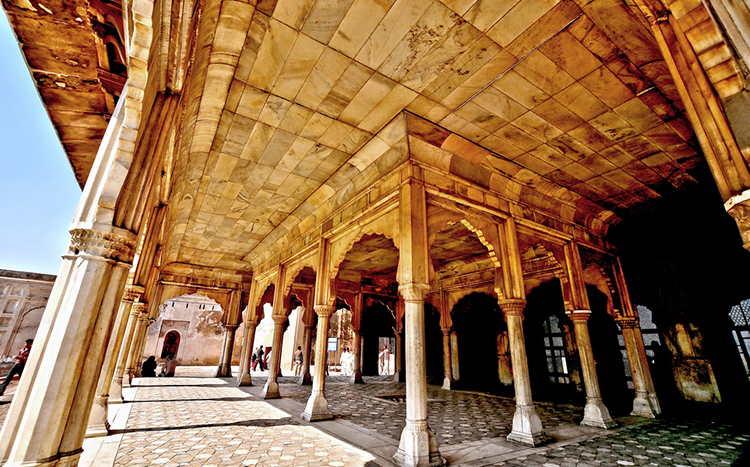Written by: Momina Mindeel
Posted on: February 11, 2016 | 
The Lahore Fort (photo by S.M. Rafiq)
(This idea was originally conceived by Ahmad Almakky, a junior at the Lahore University of Management Sciences (LUMS). The surnames of all the tour guides have been omitted to ensure anonymity.)
The Lahore Fort or Shahi Qila is a historical citadel, located in the northwestern corner of the city of Lahore. The Fort was named as a UNESCO World Heritage Site back in 1981. However, even today, local as well as foreign tourists get to hear a myriad of myths about the Fort through its very own tour guides, with immense zeal. According to Senior Tourism Officer Mr. Javed, "History can be a dry topic. In order to attract tourists, you need to add a little color to the seemingly colorless happenings of the past."

The story does not end here. If you turn right after climbing up the ‘Hathi Paer/Elephant Path’ – a flight of huge stone steps made particularly for the procession of the elephants at the outset of the Fort – you come out onto an open space. From here, you can see the Gurdwara Dehra Sahib, Minar-e-Pakistan and the four minarets of the Badshahi Mosque all at once, nestled together in the same frame. The open space is connected to an area housing the ruins of an old fort structure. This is where one of the tour guides (the name has been omitted to maintain anonymity) narrated one of his most “illustrious” stories: A prince, who remained unnamed, was cheating on his wife when he used to live inside the Fort, back in the 1600s. The princess found out about her cheating husband one day, and decided instantaneously as to what she needed to do. She climbed up one of the minarets of the Badshahi Mosque, pointed a canon towards her husband who was then basking in the sun (in the open space we were now standing at), and fired with full force. The prince died instantly. The End. After he finished narrating the story, there was complete silence for what seemed like one whole minute, after which some of us burst out laughing. The tour guide smiled too. He asked us to keep walking and told us that there was no time to discuss the technicalities of what had transpired inside the Fort for all these years.


Just before the Elephant Path – a ramp that leads up to Sheesh Mahal – there exists a deep recess, which is basically a deserted well that has been covered by iron bars in recent years for security purposes. Qaiser Hussain, one of the most enthusiastic tour guides of the Walled City, asked us to peep through the iron bars and identify a small door installed inside it. "Behind this door is the grave of Hazarat Ali Hajveri RA. Hazrat Maulana Lahori (RA) performed a maraqba (meditation) here many, many years ago. He was consequently reported to have seen the descent of Allah’s blessings, and hence he concluded that the place harbors a grave of one of the most pious men of God," told Mr. Hussain. By now, almost all of us are aware of the fact that Ali Hajveri is buried inside what we all identify as the Data Darbar. There have always been speculations about the exact location of his grave, but none of the evidence supports the authenticity of this particular piece of information.
On a side note, on the way back to the Elephant Path, there is a locked door that leads up to the catacombs of the Lahore Fort. The place was closed down for the public many years ago, as it was reported to house a number of deadly animals, including snakes. However, one can still get inside if one has special permission, which, unfortunately, I didn’t. The tour guides, nonetheless, can provide you with a vivid account of what is hidden behind that door. The fact that they can help you picture the entire place merely through their words makes you exceedingly overwhelmed, even more so than the various myths surrounding the Fort.
After gathering a number of myths from the tour guides of Old Lahore, I decided to visit the Walled City Authority (WCA) Office, located at the famous Lawrence Road. It must be noted that almost all the tour guides of the Walled City have undergone a rigorous training course, designed specifically for them by the WCA. Samina Fazil, Assistant Director Historical Research, pointed out that under normal circumstances, they do not consider oral history and the associated myths to be authentic. However, their importance cannot be denied, as they reveal a lot about the areas that they take place in. It was fascinating to see how the officials did not deny the significance of the myths, and in fact acknowledged that the importance of myths is discussed at the training programs. As Kamran Lashari – Director General WCA – said, and I quote, "It (oral history) has the energy, the vibrancy, the flavor, the expression and the involvement, which may not come through the cold and lifeless pages of the history books."

You may also like: